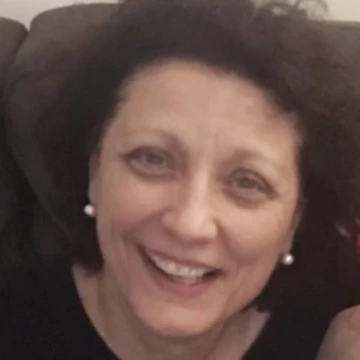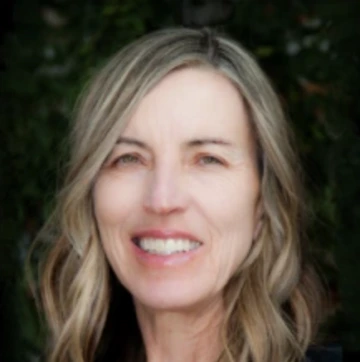Haury Program Reflects on a Decade of Partnerships to Address Society's 'Wicked Problems'

During the beginning of the COVID-19 pandemic, the Haury Program was involved in a partnership that helped provide clean water to homes on the Navajo Nation.
Photo by Nikki Tulley, courtesy of Crystal Tulley-Cordova, Navajo Nation Department of Water Resources
A University of Arizona program that has been central to the university's service to Indigenous communities will begin celebrating its 10th anniversary this month, and invites the campus and Tucson communities to join.

A $50 million endowment from Agnese Nelms Haury helped establish the Agnese Nelms Haury Program in Environment and Social Justice 10 years ago.
The Agnese Nelms Haury Program in Environment and Social Justice was established in 2014 with a vision to address society's "wicked problems" posed by social and environmental challenges. In the decade since, the program, located within the Arizona Institute for Resilience, has funded ideas that have gone on to become lasting partnerships and research centers, with a particular focus on the sovereignty and resilience of Indigenous communities.
The Haury Program will mark the milestone with events throughout the next year, beginning on Friday, Oct. 11, with the unveiling of a new garden near the Women's Plaza of Honor dedicated to Agnese Nelms Haury. It will also recognize seven Women of Haury, who co-created the program's vision and mission.

Toni Massaro, Director, Agnese Nelms Haury Program in Environment and Social Justice
Toni M. Massaro, the Haury Program's executive director, said the event is a chance for the program and its partners to reflect on the decade of achievements, recognize the people behind the work and prepare for the next chapter.
"We want to take an admiration break, a gratitude break, and an opportunity to tell the Haury story coherently to an audience that knows pieces of our work, but may not apprehend the full arc of Mrs. Haury's incredible legacy," said Massaro, who is also Regents Professor of law and dean emerita of the James E. Rogers College of Law. "It's a celebration and an anticipation of the future."
Partnerships made to last
Haury was an heiress and philanthropist who dedicated her wealth to environmental and social justice causes. Haury's husband, Emil W. Haury, was a U of A professor of anthropology from 1937 to 1980, during which time he also served as head of the anthropology department and director of the Arizona State Museum.
An endowment from Haury of $50 million established the program. She charged its leaders to support the search for solutions to society's "wicked problems" – Haury's words to describe the existential threats communities face from environmental change and social injustices, Massaro said.

Nancy Petersen, Assistant Director, Agnese Nelms Haury Program in Environment and Social Justice
Though Haury was meticulously involved in the causes she supported, she had no explicit instructions about how the money should be used, said Nancy Petersen, who has been assistant director of the program since it began.
But the program was always designed to partner with communities beyond campus.
"It had to be real partnerships, not just partnerships on paper," Petersen said. "She really wanted to change systems for social justice and social good."
In its early years, the Haury Program launched a seed grants program. Potential partners with ideas for addressing environmental or social justice challenges could receive up to $100,000 each, for a period of up to two years. Challenge grants funded ideas to address more complex challenges with awards of up to $200,000 per year for up to three years. Both grant programs laid the groundwork for projects that became significant university research and community initiatives.
The program's first challenge grant funded research to study the health risks to the Navajo Nation following the 2015 Gold King Mine spill in Colorado. That project was led by Karletta Chief, a professor and extension specialist in the College of Agriculture, Life and Environmental Sciences and a member of the Navajo Nation, and Paloma Beamer, a professor in the Mel and Enid Zuckerman College of Public Health.
Chief went on to establish the U of A's Indigenous Resilience Center in 2021, and Beamer is director of the WEST Environmental Justice Center.
"We know that the work supported by many of these early investments still continues in some form – and that was the intention," Petersen added. "The project might not look today the way it looked eight or 10 years ago, but that's good, because it means they learned, built new partnerships, and found new ways to sustain the work."
A database of the Haury Program's grant awardees is available on the program's website. As part of the anniversary celebration, the program will highlight success stories from previous awardees on social media throughout the coming year.
A more focused investment
In 2020, as the COVID-19 pandemic thinned community resources everywhere, it was clear that tribal communities would be hit disproportionately hard. On the Navajo Nation, many families live in off-grid homes that do not have running water for hand-washing, the first line of defense against a new, deadly virus.
As the Nation worked quickly to find solutions, its leaders invited groups from the university to the table. That invitation was, in large part, the result of the previous years of work for the Navajo Nation by University of Arizona faculty, Massaro said, including the work of Chief and Beamer supported by Haury.
Tribal leaders and federal officials convened with the university delegation to plan a massive water delivery project, which later became the Navajo Safe Water Project. Chief led the university's efforts in this work.
The project has since delivered roughly 200,000 gallons of drinking and cooking water to Navajo Nation families who do not have piped water access. The program has funding to continue through 2025.
"The water project was a model of how to effect change – it was the Navajo Nation, the Indian Health Service, other state and federal representatives, Dig Deep, and university partners all committed to a particular outcome on the ground, despite headwinds that were stunning," Massaro said.
"Haury was at the table," she added, "and able to add our resources to assist this coalition in bringing water to these homes."
Massaro, who began as executive director the same year the water project came together, saw an opportunity to pivot the program's focus toward supporting more work to advance the sovereignty and resilience of Indigenous communities. This was always part of the original mission, Massaro and Petersen said, but is now the program's central focus.
"I thought we might be able to do more by doing less, by focusing in particular on an especially wicked problem where the university is well positioned to help," Massaro added. "We made our investment more focused – still on social and environmental justice, but Indigenous resilience is our mission now."
The Navajo Safe Water Project is only one example of partnerships the Haury Program has forged to support Indigenous resilience education, research and outreach. Others include:
- Helping establish the university's Indigenous Resilience Center in 2021.
- The Haury Native Pathways Graduate Research Awards Program, which provides grants for graduate student research focused on environmental challenges faced by Native American and Indigenous communities.
- Funding work in the university's Office of Native American Advancement and Tribal Engagement and the Office of Native American Initiatives, such as NAI's strategic plan for Indigenous student, faculty and staff success.
- Funding a project, in partnership with the Navajo Nation Department of Water Resources and the Daniel F. Cracchiolo Law Library in the James E. Rogers College of Law, to digitize the Nation's collection of water-related documents.
- Sponsoring the annual conference for the American Indian Science and Engineering Society, the leading national conference for Indigenous professionals and students working in science, technology, engineering and math disciplines.
A garden to recognize the work Haury seeded
One day in 2014, shortly after Haury passed away, the Haury estate trustees invited Petersen to their home to see if any of Haury's possessions would be valuable to the program. Petersen was most struck by Haury's extensive garden, complete with a collection of tools and pots.
As Massaro, Petersen and the program's board began thinking about ways to mark this year's anniversary, a garden became an obvious choice, Petersen said. As part of the program's celebration event on Oct. 11, program leaders will unveil Mrs. Haury's Garden, installed near the Women's Plaza of Honor, just west of Centennial Hall.
"It's a recognition of all the things she has seeded on campus," Petersen said. "But it's also a gift to the U of A. We want to transform this dirt lot into a blossoming garden. In reality, that's what Mrs. Haury has done: She's turned something barren into something amazing and beautiful."
Those interested in discussing opportunities to partner with the Haury Program on projects or funding opportunities can email the program at haury@email.arizona.edu.
Originally published by University of Arizona News on October 1 >>

